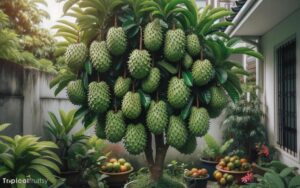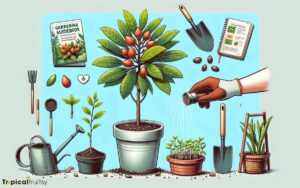How Long to Boil Ackee? Explained!
Ackee, the national fruit of Jamaica, is a key ingredient in Caribbean cuisine, particularly when cooked alongside saltfish.
Preparing ackee requires careful attention to detail, as the fruit must be properly ripe and cleaned before cooking to remove toxins.
Boiling is a common method to prepare ackee for consumption. To ensure safety and retain the delicate texture, it is essential to understand the optimal boiling time.
This process typically involves immersing the fruit in water and bringing it to a boil. The duration of boiling can vary depending on the maturity and size of the ackee pods.
This introduction will guide you through the recommended boiling time and how to discern when the ackee is suitably cooked, ensuring both safety and the integrity of this traditional dish.
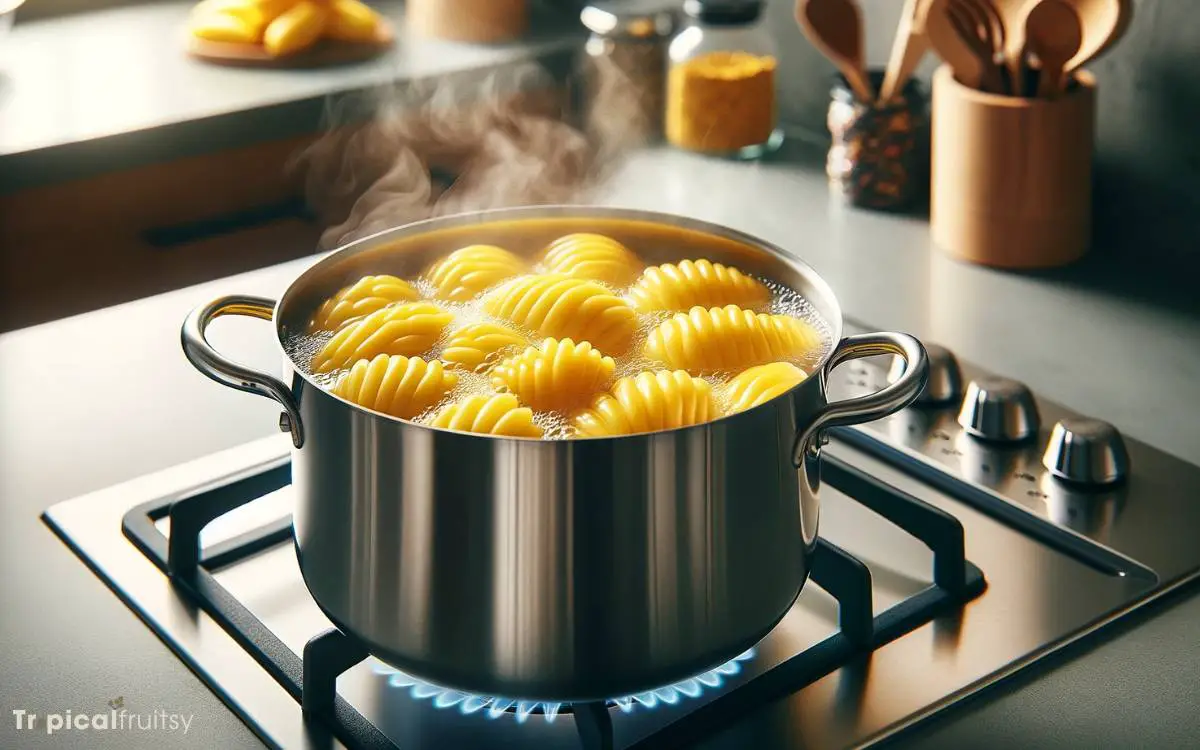
Key Takeaway
Understanding Ackee Preparation
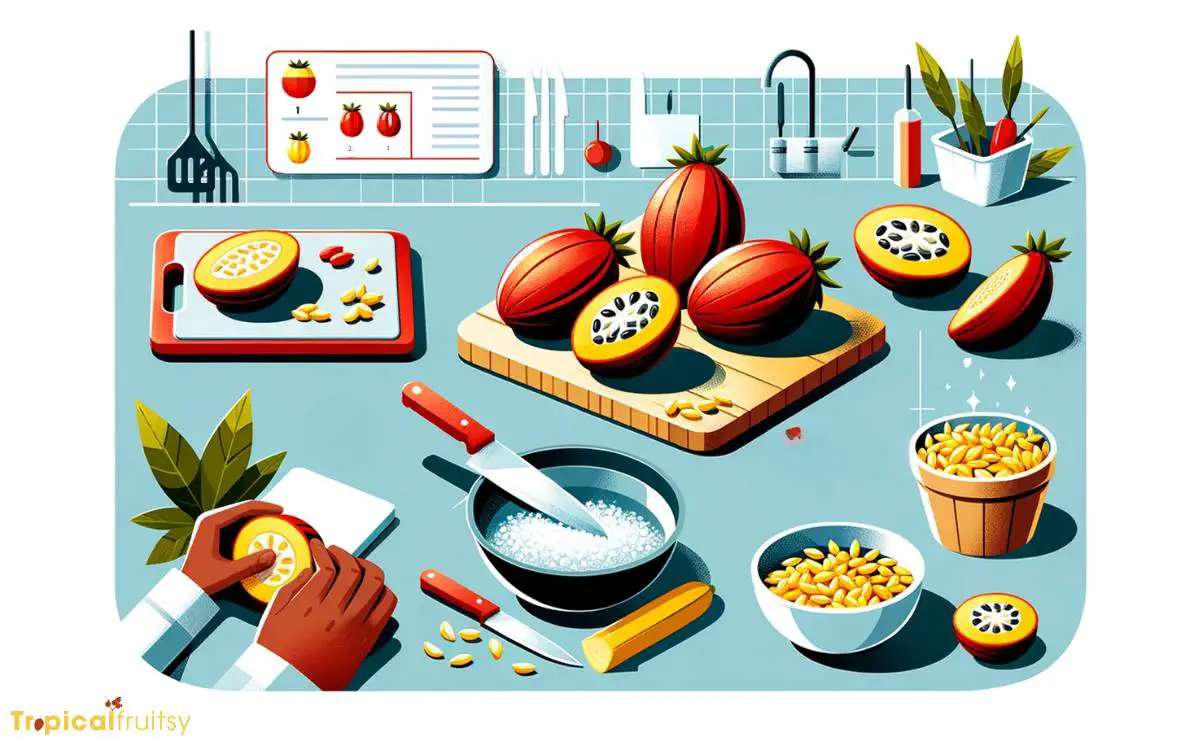
Proper preparation of ackee, a traditional Jamaican fruit, involves several critical steps. One of these steps includes boiling the fruit for a specific duration.
To ensure safety and palatability, unripe ackee must never be consumed as it contains hypoglycin A, a potent toxin.
Ripe ackees are identified by their naturally opened pods, a sign that the fruit can be safely harvested.
Once depodded, the arils—the edible portions—should be meticulously cleaned and all traces of the pinkish seed coat removed. Subsequently, boiling the arils is imperative to inactivate remaining hypoglycin A.
The standard boiling process entails submerging the ackee in water for approximately 5 to 6 minutes, sufficient to achieve proper texture and ensure the reduction of toxins to benign levels.
Pre-Boiling Ackee Steps
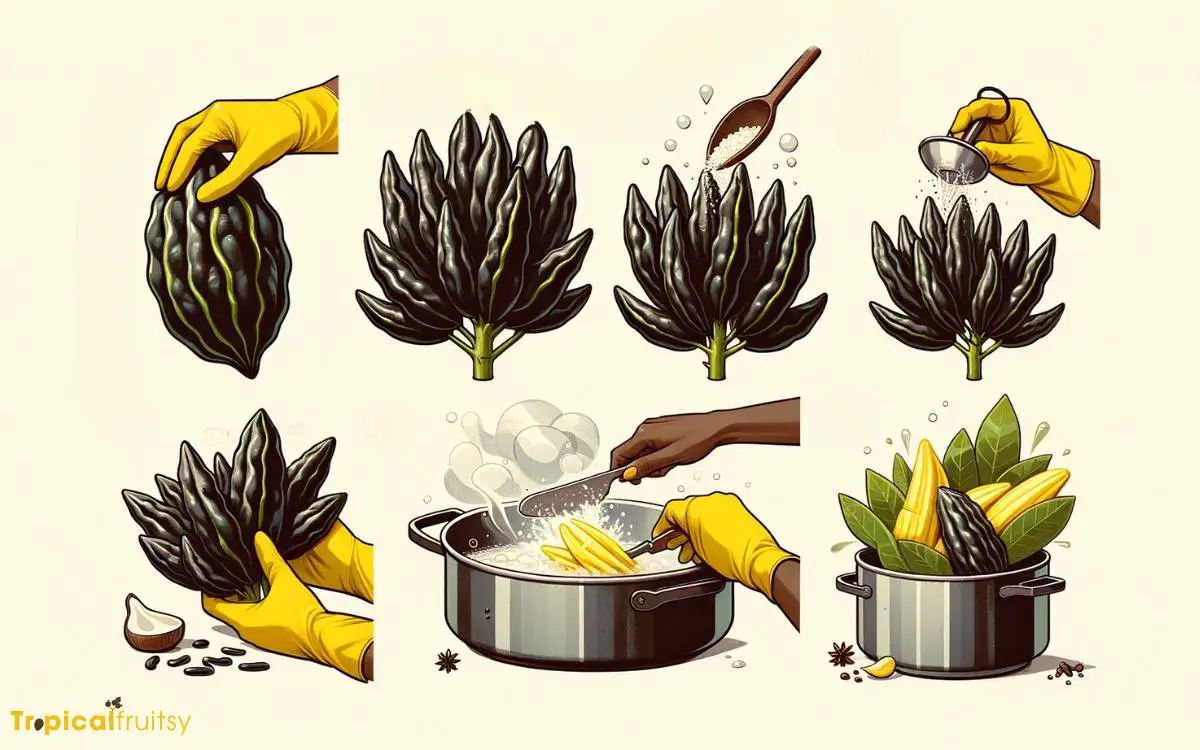
Before immersing the ackee arils in boiling water, it is essential to thoroughly wash them to remove any external contaminants. The pre-boiling process is a critical step in ensuring the safety and quality of the final dish.
The following list delineates the necessary actions to be taken before boiling:
- Inspect the ackee pods, confirming that they are naturally opened, as unripe ackee contains toxic substances.
- Remove the seeds and the red fibrous membrane, which are not edible and can be harmful if ingested.
- Rinse the arils under cold running water to eliminate any dirt or residual substances.
- Place the clean ackee in a bowl of fresh water, letting them soak briefly to mitigate any lingering bitterness.
These steps are fundamental to preparing ackee safely and correctly.
Ideal Boiling Time for Ackee
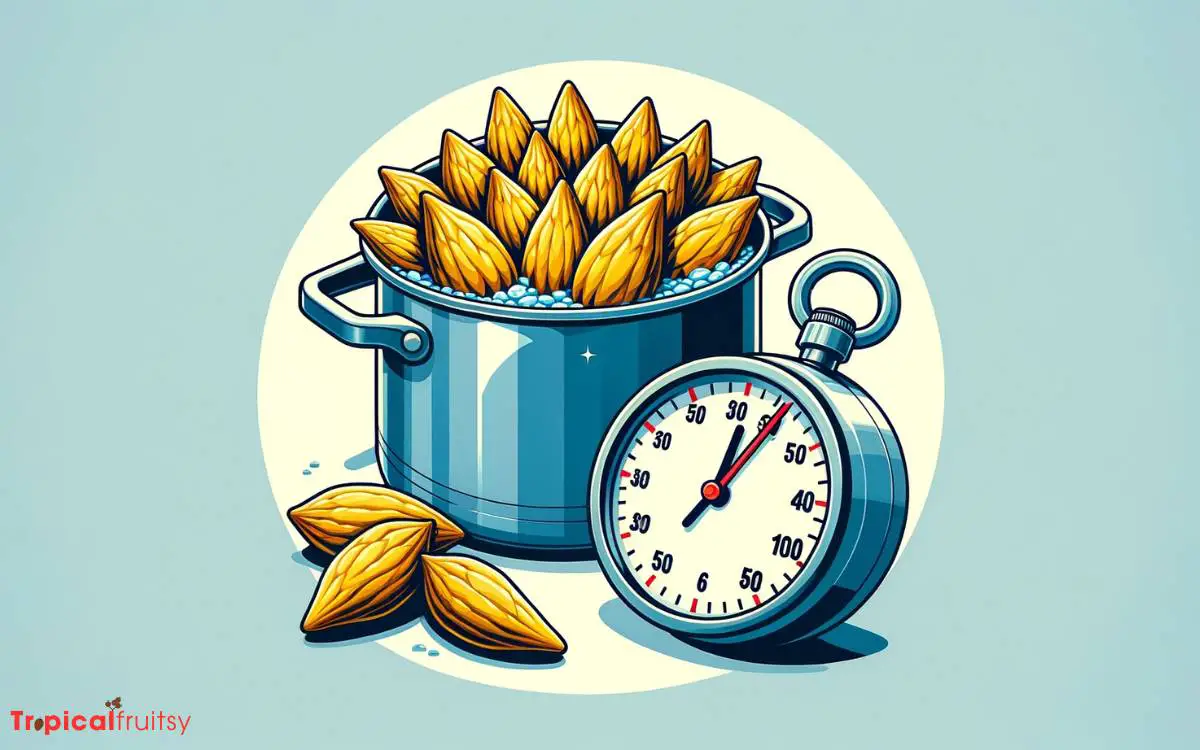
The ideal boiling time for ackee is typically between 15 to 30 minutes, depending on the fruit’s maturity and desired tenderness.
To ascertain the precise duration conducive to optimal edibility, one must consider the initial firmness of the ackee arils.
Fruits exhibiting lesser resistance require a reduced thermal exposure, hence skewing closer to the 15-minute lower limit.
Conversely, ackees with a denser composition necessitate an extended immersion, approaching or achieving the 30-minute threshold.
Crucially, the acknowledgment of the variable nature of boiling times is imperative. The objective is to reach a point where the ackee is sufficiently tender, yet retains structural integrity, preventing disintegration.
Vigilant monitoring during the boiling process is advised to ensure that the culinary characteristics of the ackee are preserved, achieving the desired gastronomic outcome.
Ackee Doneness Indicators
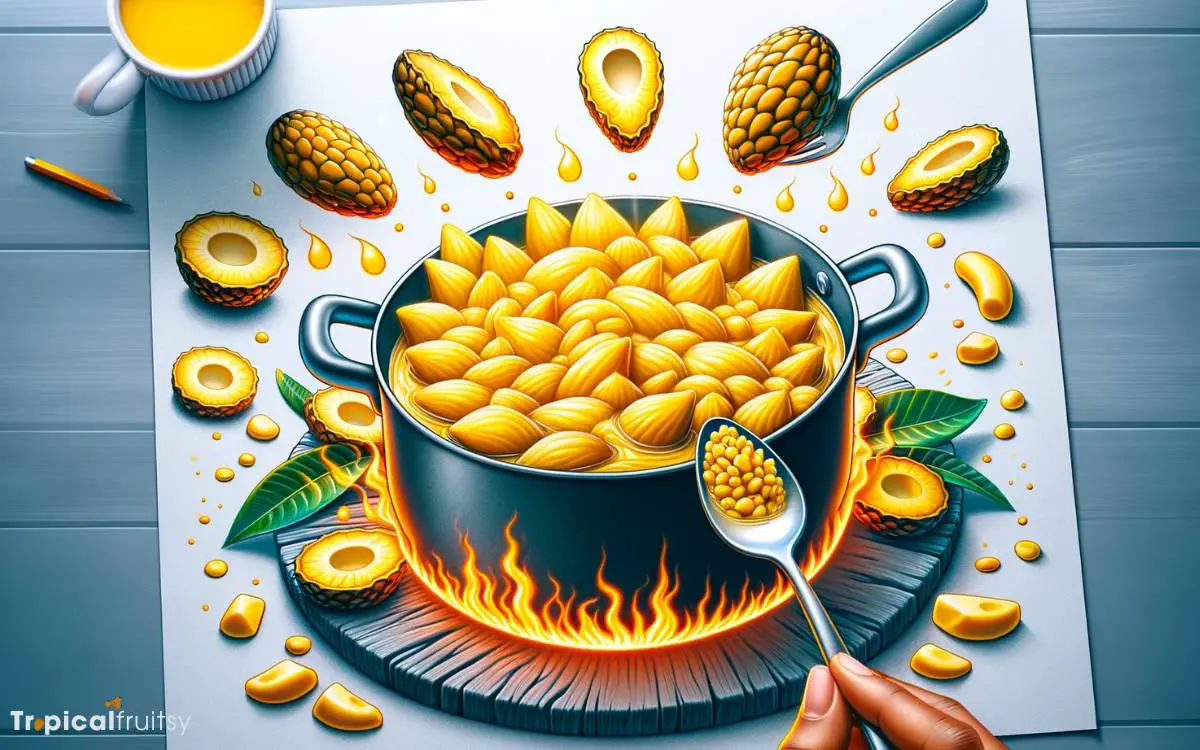
While ensuring the ackee remains submerged for the appropriate duration, chefs must vigilantly assess its texture and color as principal indicators of doneness.
- The ackee flesh should exhibit a bright yellow hue, devoid of any raw splotches, indicating thorough heat penetration.
- Upon gentle pressure, the ackee segments should yield slightly, demonstrating a soft, buttery consistency without disintegrating.
- There should be no evidence of firmness at the core of the segments, which would suggest incomplete cooking.
- The seeds and inner red tissue — the aril — must detach easily if nudged, signifying that the ackee is ready for consumption.
These tactile and visual cues are critical for culinary precision. Once these criteria are met, the focus shifts to post-boiling ackee handling, ensuring the integrity of the fruit for service.
Can I Use the Same Boiling Time for Ackee and Chicken Back as I Would for Ackee Alone?
When cooking ackee and chicken back together, it’s important to adjust the boiling time to ensure the chicken back is fully cooked. To ensure both are cooked thoroughly and safely, follow the recommended boiling time for chicken back and consult a reliable source for guidance on how to cook ackee.
Post-Boiling Ackee Handling
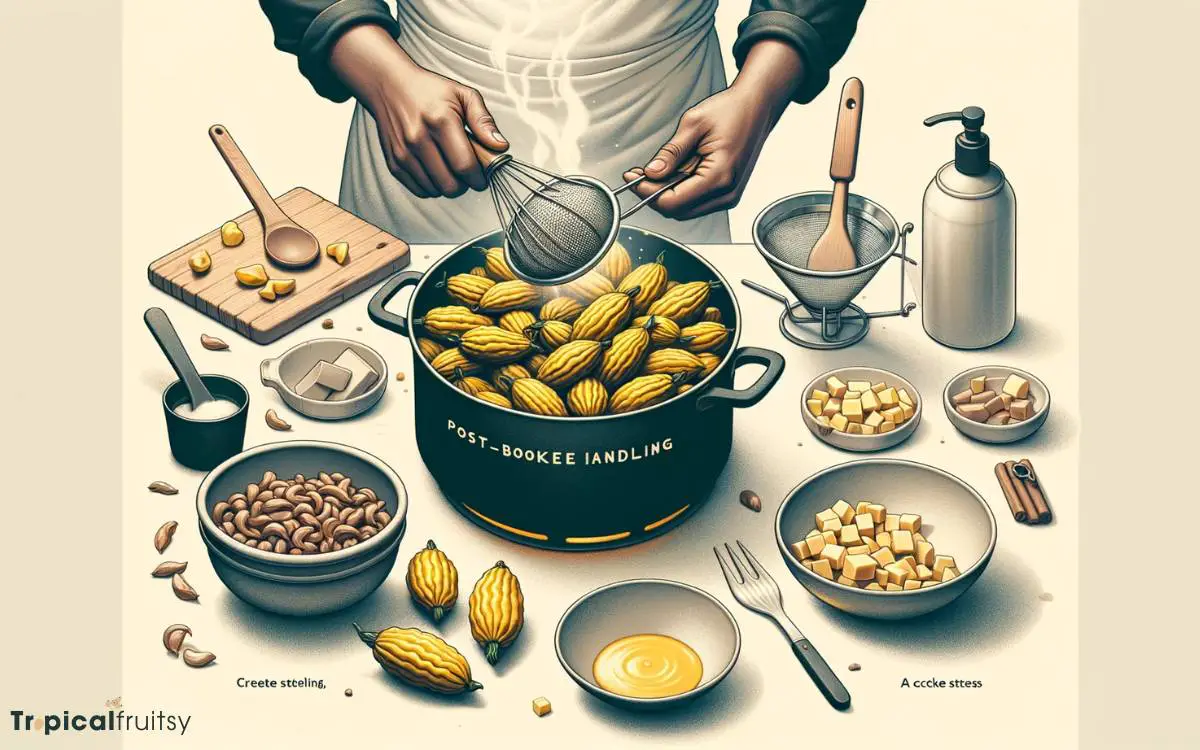
Proper handling of ackee after boiling is essential to maintain its delicate texture and prevent any breakage.
Once removed from the heat source, the ackee must be carefully drained to eliminate excess moisture without compromising the structural integrity of the fruit.
The following table outlines key considerations for post-boiling ackee handling:
| Step | Consideration |
|---|---|
| Draining | Use a colander with fine mesh to avoid fruit damage. |
| Cooling | Allow to air-cool to minimize thermal shock. |
| Preparing for Use | Handle gently to keep the lobes intact for presentation. |
Ackee should be treated with utmost care to ensure that its unique texture is preserved for culinary use. Implementing these handling techniques will yield optimal results for both taste and visual appeal in subsequent dishes.
Conclusion
In summation, proper preparation of ackee is paramount to both its culinary quality and safety.
The fruit, when boiled for 15 to 30 minutes, reaches an optimal state of tenderness and edibility. Indicators such as the softness of the flesh and the opening of the pods signal readiness.
Following the boiling process, careful handling ensures the fruit’s integrity and readiness for incorporation into various dishes. The mastery of ackee preparation is akin to a fine art, requiring both knowledge and finesse.





